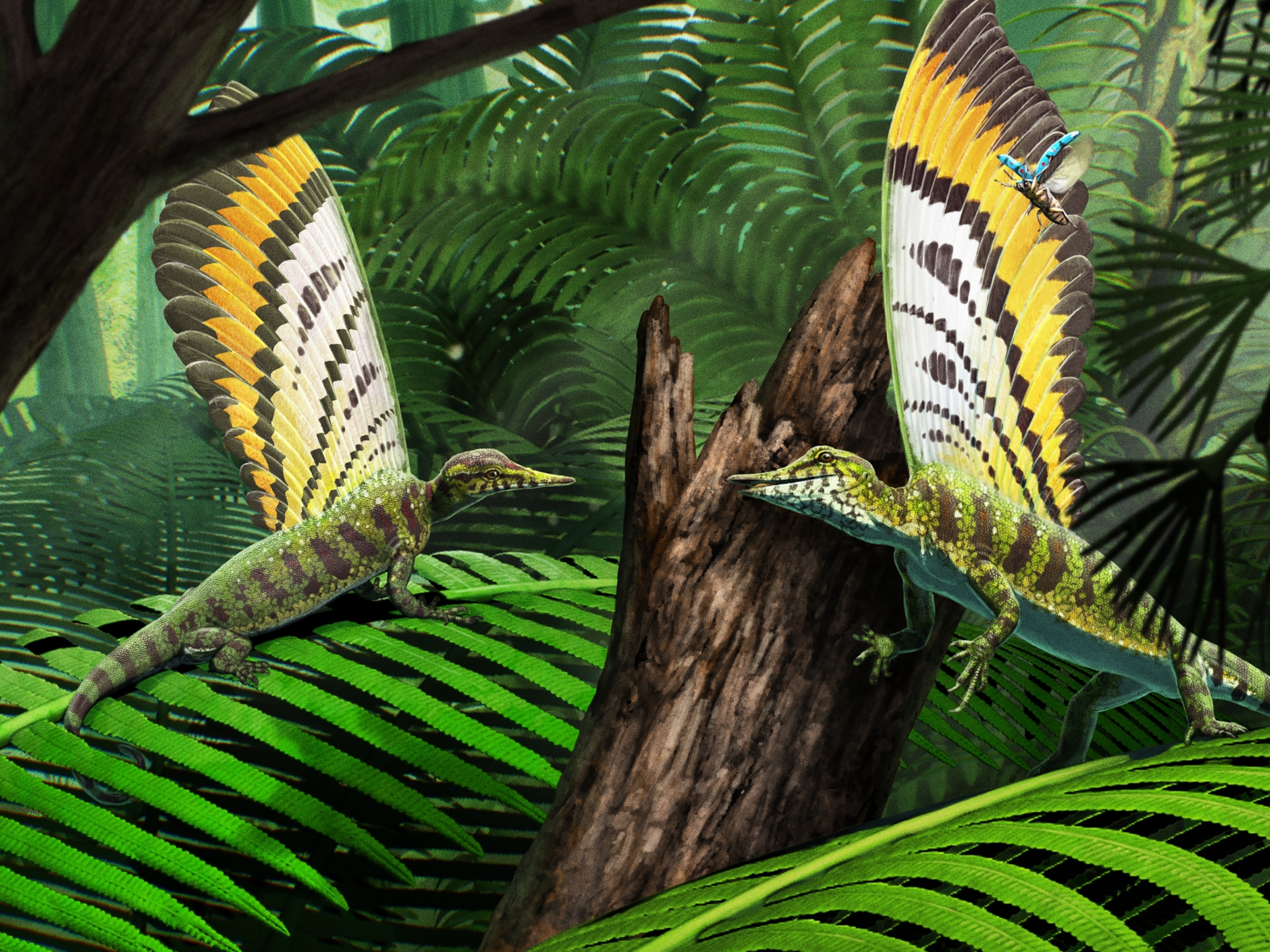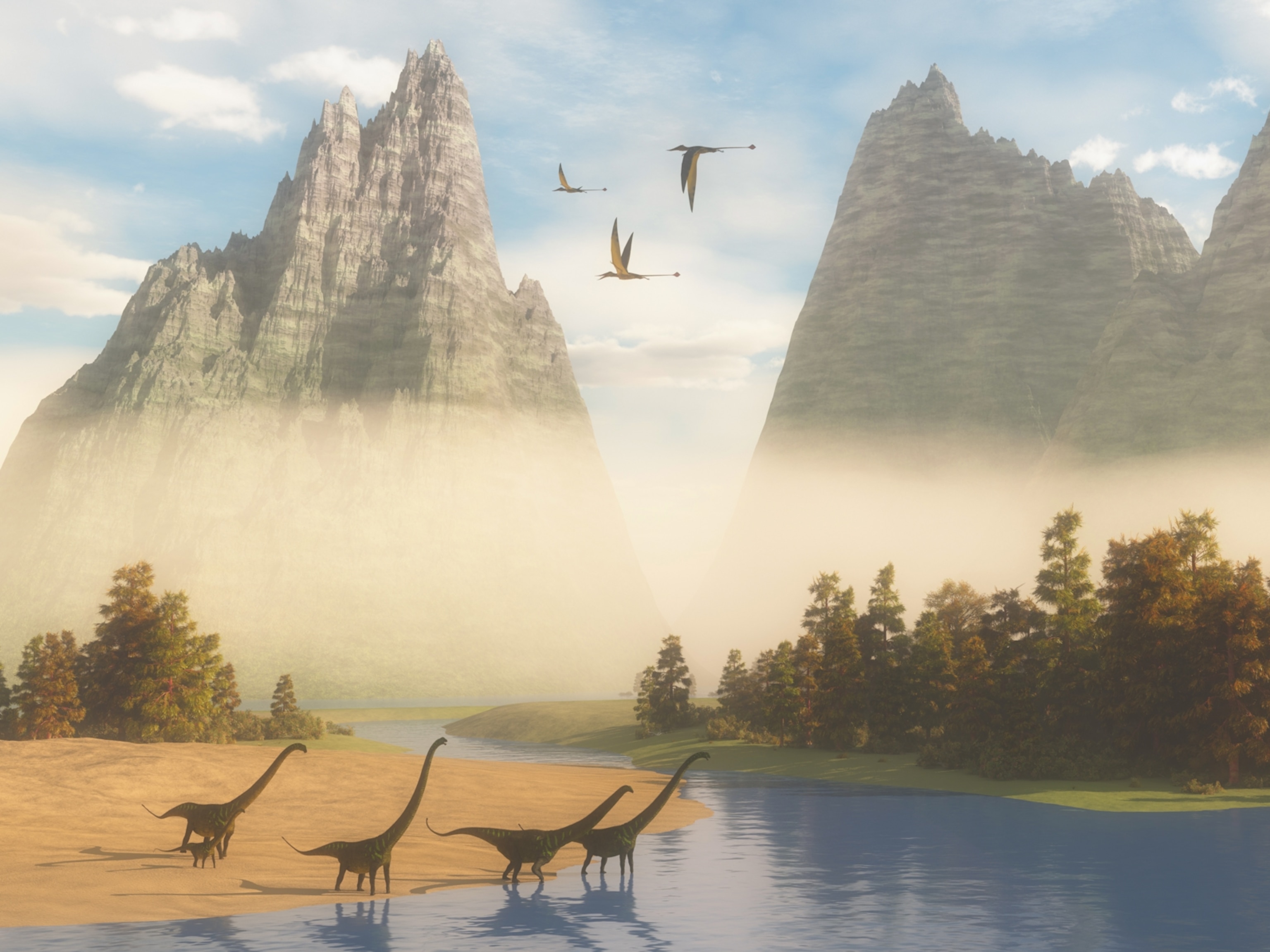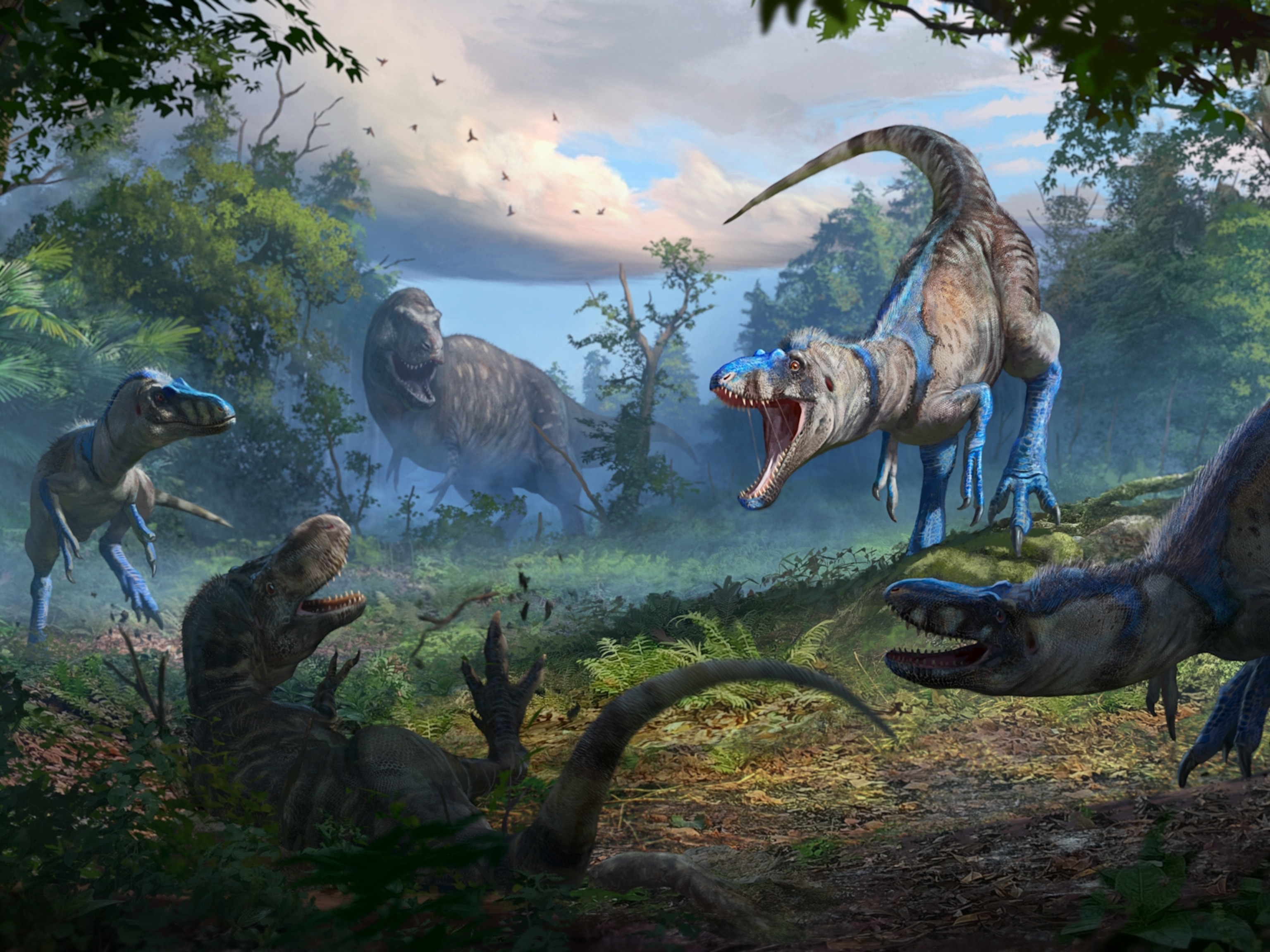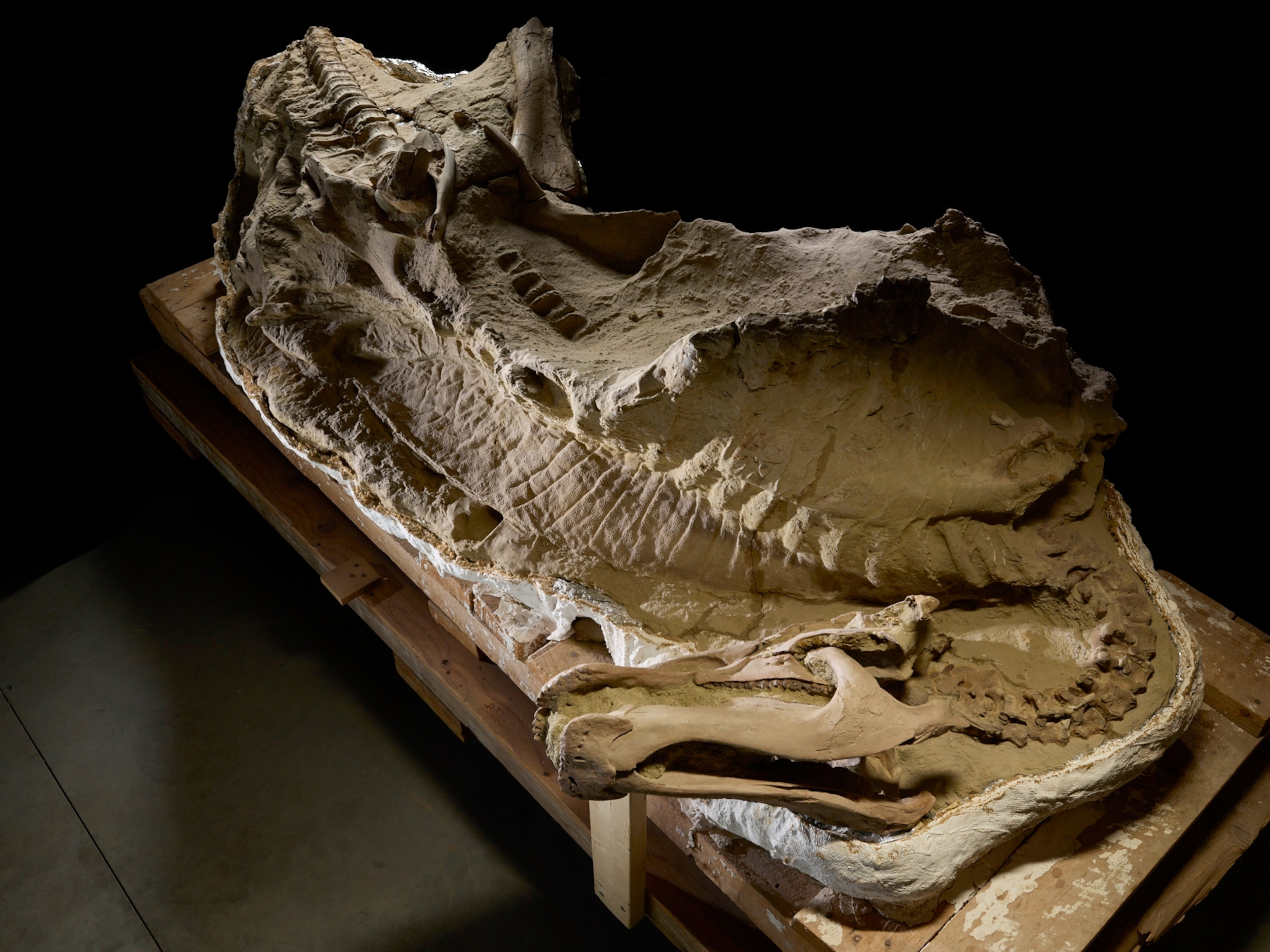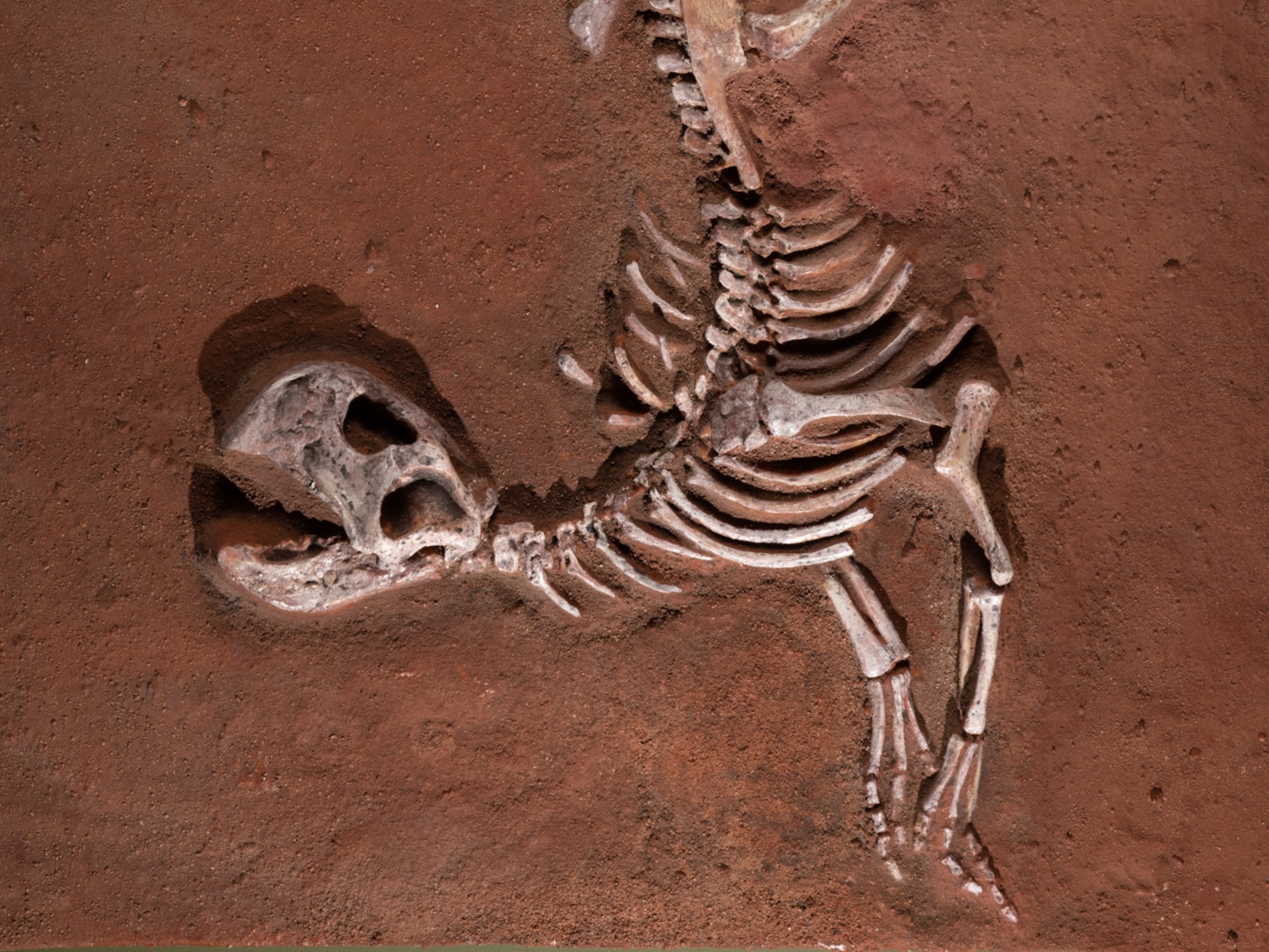
New "Chicken From Hell" Dinosaur Discovered
The 66-million-year-old feathered dino resembled a giant, demonic bird.
A newly discovered dinosaur species that paleontologists have dubbed the "chicken from hell" is among the largest feathered dinosaurs ever found in North America.
The 11-foot-long (3-meter-long), 500-pound (225-kilogram) Anzu wyliei is an oviraptorosaur—a family of two-legged, birdlike dinosaurs found in Central Asia and North America. These dinosaurs ranged in size from a few pounds to over a metric ton, according to a study published March 19 in the journal PLOS ONE.
With its toothless beak, long legs, huge feet, and claw-tipped arms, A. wyliei looked like a devilish version of the modern cassowary, a large ground bird found in Australia.
It was "as close as you can get to a bird without being a bird," said study leader Matt Lamanna, a vertebrate paleontologist at the Carnegie Museum of Natural History in Pittsburgh. (See "Pictures: Dinosaur's Flashy Feathers Revealed.")
The dinosaur's well-preserved skeletons suggest it was a wide-ranging eater, munching on a variety of vegetation and perhaps small animals.
The species emerged from three 66-million-year-old skeletons excavated from the fossil-rich Hell Creek formation of South and North Dakota, starting in the late 1990s. The third skeleton was found more recently, and it took years to identify and study all the remains.
The three Cretaceous fossils are the most complete ever found of North American oviraptorosaurs, whose remains are much scarcer than those of their Asian cousins. (Quiz: Test your dinosaur IQ.)
"We've got almost a whole skeleton from head to toe," said Lamanna, adding that scientists don't know why the fossils were so well preserved.
"Not only can we characterize a whole new species," he said, "we can characterize a whole group that has remained a huge mystery."
That mystery sprang from an absence of intact North American oviraptorosaur skeletons.
"Oviraptorosaurs are weird and wonderful animals, but previously the only decent skeletons were known from Asian forms," said University of Maryland vertebrate paleontologist Thomas R. Holtz, Jr., who wasn't involved in the study. "We didn't have a way to get a coherent picture of these animals until now."
Fleshing Out Anzu
The study confirms previous research that North American oviraptorosaurs were related to their Asian cousins but were genetically and physically distinct. Asia and America were connected by the Bering land bridge during the Cretaceous.
"They're not just carbon copies," Lamanna said of the two groups of oviraptorosaurs. For example, A. wyliei had much longer, more graceful legs than its Asian cousins did.
With the new research, Lamanna said, scientists can finally replace educated guesswork with a solid picture of what an oviraptorosaur really looked like.
In addition to its long limbs, the team found the ancient animal sported a stubby tail, likely framed by a fan of tail feathers. (Related: "One-Ton Feathered Dinosaur Found: Fluffy and Fierce.")
Though the team didn't find direct evidence of feathers, the species was so closely related to birds that it was very likely covered in feathers that looked identical to those of modern birds.
No one knows why the dino needed feathers-—ourtship displays and insulation are two theories—but the scientists do know its environment was hot. (Also see "Feathered Dinosaur Colors Bloomed 150 Million Years Ago.")
Based on analysis of rocks found with the fossils, A. wyliei lived in a humid, swampy floodplain on the coast of an inland sea, very much like a Louisiana bayou, Lamanna said.
An especially tall, bony crest topped A. wyliei's head, which may have served to communicate with its kin.
The newfound dinosaur's genus name, Anzu, refers to a feathered demon in ancient Mesopotamian mythology. The species name honors Wylie J. Tuttle, the grandson of Carnegie Museum benefactors. The "chicken from hell" nickname was coined by anthropologist Bill DeWalt, who was the director of Carnegie Museum of Natural History when the South Dakota specimens were acquired by the museum.
Swiss Army Knife of the Cretaceous
One of the biggest puzzles around oviraptorosaurs, Lamanna said, had been what they ate.
Physical features on the North American skeletons indicate Anzu dined on a variety of items from the Cretaceous smorgasbord, including vegetation, small animals, and possibly eggs.
Small prongs of bone found on the skulls' palates may have helped the dinosaurs swallow eggs; the same prongs are found today in egg-eating snakes.
The dinosaur also had big hands with large, curved claws, which are usually found on animals that grab small prey to shove down their throats.
And the Anzu's jaw shape suggested it could shear pieces off plants.
The University of Maryland's Holtz agreed that the new evidence suggests the dinosaur was either a strict herbivore or an omnivore that may have preyed on small animals. (Watch video: "Dinosaurs 101.")
Such flexibility in diet likely explains why A. wyliei and oviraptorosaurs overall were so diverse and successful in their time, Lamanna said.
"It was the Swiss Army knife of the Cretaceous," he said.

